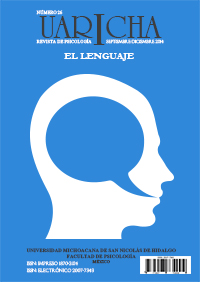Experimental course of visual arts designed for elementary school children of p’urhepecha community of (Cherán, Michoacán). Proposal, development and results
Main Article Content
Abstract
Indigenous communities are isolated and usually relegated to the background in education and public services. Despite this, they are holders of a rich culture, unique customs and social rituals which unfortunately are banishing because of the acculturation that is happening due to different factors such as migration and mass media storm that manipulates to consumerism ideals. The objective of implementing the program “Among colors, lines and scribbles”, which is part of the visual arts course for children in the community of Cheran, arose out of concern for the increasing loss of cultural identity, especially younger generations indigenous communities. The innovation of the program was to create and develop an effective method, supported on the research results, professional experiences and artistic training applied by a graduated degree in visual arts at the Universidad Michoacana de San Nicolas de Hidalgo. As a result of the course and exposition of the final products: the drawings and paintings of the participant children generated the guide.
Article Details
Section

This work is licensed under a Creative Commons Attribution-NonCommercial-NoDerivatives 4.0 International License.
The authors have the right to ownership or copyright and they give to "Uaricha Psychology Magazine" the right to publish for the first time the article, as well as disclose and distribute it on the technological available media and through repositories.
Uaricha Psychology Magazine, is a quarterly publication, published by the Psychology College of the "Universidad Michoacana de San Nicolás de Hidalgo", Street Francisco Villa No. 450, Col. Dr. Miguel Silva, Morelia, Michoacán, P. C. 58110. Phone (+52) 443 312 9909, ext. 149, www.revistauaricha.umich.mx, uaricha.publicaciones@umich.mx. Responsible publisher: Roberto Oropeza Tena. Reserve of exclusive use rights No. 04-2013-070413365500-203, e-ISSN: 2007-7343, Granted by the National Institute Copyright. Responsible of the last update of this number, Computer center of the Psychology College, Ing. Erick Vidar Alva Rangel.
How to Cite
References
Arnheim, R. (1993). Consideraciones sobre la educación artística, España: Paidós.
Gardner, H. (1997). Arte, mente y cerebro: una aproximación cognitiva a la realidad. (7ª ed.) Argentina: Paidós.
Ives, W. y Gardner, H., (1984). Cultural influences on Children’s Drawings. A developmental perspective , en: Art in Education. An International Perpsective, Robert W. Ott y Al Hurwitz, Estados Unidos: Pennsylvania State University Press.
Harris, Dale B. (1982). El test de Goodenough. Revisión ampliación y actualización.España: Paidós.
Lowenfeld, V. (1961). Desarrollo de la capacidad creadora. Argentina: Kapelusz.
Piaget, J. (1961). La formación del símbolo en el niño: imitación, juego y sueño, imagen y representación. Mexico: Fondo de Cultura Economica.
Vigotsky, L. (1988). El desarrollo de los procesos psicológicos superiores. México: Grijalbo.
Vigotsky, L. S. (2003). La imaginación y el arte en la infancia. Ensayo psicológico. España: Acal.Recibido: 20 de julio de 2011

